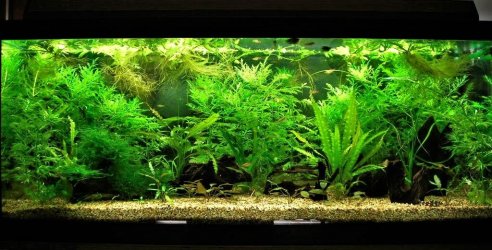fishfood!!
New Member
- Joined
- Apr 2, 2018
- Messages
- 19
- Reaction score
- 0
Are my Alternanthera reineckii salvageable? They were doing good for low tech tank for a while and getting really healthy growth, almost doubled in size and growing 1 stem node per week until I got some amano shrimps. I never actually caught the shrimps in the act but I suspect the amanos damaged the leaves while grazing on the algae. 1st photo is before amano shrimps. The Rest of photos are after. It has been about 2-3 weeks since I relocated the shrimps but AR not bounced back yet. Minus 3-4 days for blackout as a desperate attempt to remove any algae on the leaves to give the AR a last chance to be healthy. If you can see in the photos, a lot of the upper leaves are melting. I trimmed a lot of leaves away in the past 2-3 weeks to remove any damaged ones, now I am reluctant to trim anymore! Bottom leaves are doing okay. Some of them actually perked up after the blackout.
Let me know what you think and if there is anything I should add or take away to increase the chance.
Substrate is caribsea eco complete. Nitrate 5-10ppm. I have flourish tabs all around the tank for NPK and rely on eco complete for the micros. I dose excel daily and flourish and flourish iron 2-3 times a week. Light is on 6 hours (tank is fairly new. Put together March of this year)
Any insight advise on what I should do will be great
Another question I have is, is this a result of deficiency or my amano. Since I never caught the shrimps in the act, I can’t be certain which it is....[emoji27][emoji47][emoji848]
Thank you
Alan








Sent from my iPhone using Tapatalk
Let me know what you think and if there is anything I should add or take away to increase the chance.
Substrate is caribsea eco complete. Nitrate 5-10ppm. I have flourish tabs all around the tank for NPK and rely on eco complete for the micros. I dose excel daily and flourish and flourish iron 2-3 times a week. Light is on 6 hours (tank is fairly new. Put together March of this year)
Any insight advise on what I should do will be great
Another question I have is, is this a result of deficiency or my amano. Since I never caught the shrimps in the act, I can’t be certain which it is....[emoji27][emoji47][emoji848]
Thank you
Alan








Sent from my iPhone using Tapatalk





